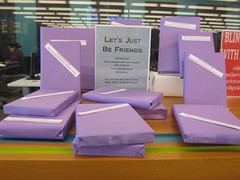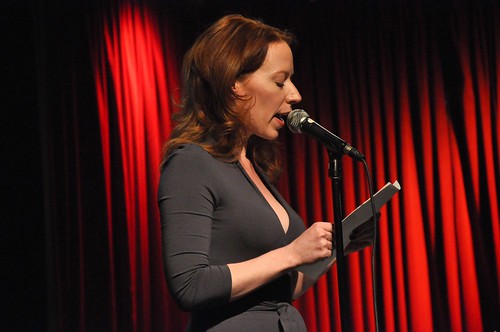This is the final part of the book writing series, and today we’re going to talk about the process of trying to get your book published by someone else, as well as self publishing your book. Before we get there, though, let’s do a quick recap of what I’ve talked about thus far.
Part one talked about coming up with the concept for whatever it is you want to write about. Part two discussed how to plan the steps you want to take before writing your book. Part three talked about determining when you wanted to write and what method you were going to take. Part four talked about ways to tell your story, no matter if you’re writing fiction or nonfiction. And part five talked about the editing process.
Now we’re up to the publishing part of the story, which is the final piece of it all. This presumes that you’re looking to try to do something with what you’ve written; if not, you can skip this part.
You’ve now edited your book and it’s time to find a publisher, or an agent. There are a few things you need to know before you try. Publishers don’t have any idea how to promote your book; plain and simple. Sure, if you’re already a big time writer, or a famous person, they’ve got a clue. But don’t expect any publisher to even look at your book unless you can sell them on what your book is all about. Not only that, but you have to try to convince them why your book is worth their attention, who the market will be, and how they should market it. You’ll need to have a catchy title, which can be a major problem for some, and it has to make some kind of sense to the rest of the story. You’ll need to have an outline of what the book is all about. You may need to send either the first few chapters of the book or even the entire book. And you’ll need to have a killer cover letter that’s not too long, or not too short.
Yes, that’s confusing, but here’s how you end some of that confusion. There’s a book called the Writer’s Market, and it’s where you’re going to find the list of publishers of all types of books or magazines and the genre’s they cover. Each publisher lists their guidelines for how they want you to submit your book to them. Some of them are going to say they don’t take any original manuscripts directly from the writers. This always means they only work with agents; some publishers will tell you that directly. You can either buy this book, or go to the library, as every library in the country probably has this book in circulation.
Either way, you’re still going to have prep work to do, whether you’re trying to pitch to an agent or a publisher. There’s a debate as to whether you should send your book to only one publisher or agent at a time; some say yes, some say no. I tend to go with the side that says it’s okay to submit your book to more than one publisher at a time, for two reasons. One, if you’re a new writer, you’re probably going to have difficulties cracking through in the first place, so why not get as much early feedback as possible. Two, if you’re lucky enough to hear from more than one publisher, you get to pick which one to go to, and it will probably be the last time you get to make a decision for yourself for a long time.
My tale is that I sent my book out to ten publishers at a time. Some of them accepted email submissions, which made it easy. I started at the beginning of the alphabet, which made it easy to keep track of. Sometimes you might have to submit something more than once to a publisher after the time they say they’ll take in the book, but you get to make that decision for yourself. When I’d heard from at least five publishers, I’d try again. All in all, I sent my book to 67 publishers, and heard back from 47 of them. Of course, every one of them rejected my book, but not all of them rejected it without a reason. About half of them rejected it saying they weren’t publishing anything of that particular genre “this season”; this was back in 2002, and remember, the genre was leadership and management, which hadn’t quite grown at that point.
Just over half of the rest of them said they didn’t know how they’d market the book; that was purely my fault, because I didn’t know at the time how to tell them to market it. Truthfully, before I’d written my book, I had never read any other books on the topic, because I didn’t want to be influenced by anyone else’s process. If I’d done it properly, I should have checked out the market after I’d written my book so I’d have had a better understanding of how to promote my book. I also had a problem with the title; I didn’t have the title Embrace The Lead until over two years after I’d written it, so I really hadn’t given anyone much to go on. Some of these people must have actually read whatever I’d sent them, because they said some nice things about it while saying they didn’t know what to do with it. The last bunch just rejected it outright, with the standard “no thank you” letter, and left it at that.
At that point, I could have considered myself at a crossroads. Instead, I decided I would self publish my book. Now, there are four options one can decide upon when it comes to publishing one’s own book. The first option is to go the ebook route, which I started out with. I began by selling my book off my website in two forms. One could purchase the entire ebook, or one could purchase the book in three individual sections, since it’s broken out that way.
The second option is to go to a vanity publisher of some type. There are multiple types of vanity publishers, and you’re going to end up paying some kind of money for all of them. The one I know the best is Publish America, but I’ve also heard some fairly nice things about Lulu. Each of these offers the opportunity to pay someone to help edit the book, which you might want to take advantage of if you decided not to spend all the time I did in self editing mine. What they both offer are custom made covers, print on demand books (this means you pay them if you want more books to sell for whatever reason), assistance in obtaining an ISBN number (International Standard Book Number; this is the publisher number which allows you to sell your book on sites such as Amazon and Google Books), and so many “free” copies initially for however you choose to use them. This isn’t such a bad way to go, but I decided it wasn’t how I wanted to go.
The third option is to go to a copy center such as Kinko’s and have your book made by them. The problem I had there is that they’re not really book binders, so they would have created my book with a spiral binder, and that was unacceptable to me. It would have been very cost effective, but it would have looked more like a manual than a book.
I wanted it to look like a book, so I chose the fourth option, which was taking it to a printing company. The costs associated with doing this will vary based on what you ask for. In my case, I decided that the only color I wanted on the cover was having the title and my name printed in blue ink. Color gets very expensive, and had I wanted every page of my book in color, the cost would have jumped. If I’d chosen a color background it would have gone up a little bit, and if I’d chosen more than one color, the cost would have gone up drastically. That would apply if you decided to put any pictures in your book also; black and white images cost nothing extra. What surprised me is that they wanted the book in a .pdf format instead of a Word document; I gave it to them both ways, just in case.
I decided I wanted an initial run of 300 books. That cost me around $1,300, and I was happy with that price. That came to $4.33 a book, which was well worth doing it. At that rate, I would have to sell 52 books to make my money back if I sold it at $25, which is the price I sell it at now off my website. However, when I take it with me on speaking engagements, which was the reason I wanted so many books, I usually reduce the price to either $20 or, every once in awhile, $10 a book, depending on who I’m speaking in front of. I have easily made back my initial investment; thank goodness. I still have about 150 books left, though, in case anyone wishes to buy one, and I even autograph it if requested. The most important thing for me, though, is that it looks like a book. Sure, a pure white book with no frills, but still a book.
As for the ISBN number, I purchased my own at the link above, paying for 10 ISBN numbers, which means that I can write nine more books and already have a publisher number for them. I didn’t have the publisher number when I published the first book, but when I write my next books, I’m going to be sure that number is on the book. It adds extra credibility to your book to have that number on there, even if you don’t decide to sell it anywhere other than on your own website, or with the assistance from other places.
My book is listed on 10 other sites, none of them paid for, and only one of them asked for a reciprocal link, that being Published.com, and I’m happy to give them that link. Basically, it’s like any other internet marketing venture; the more you can get the word out, the better the opportunities you’ll have to sell your book.
I want to mention this one point, if I may. There are different benefits between getting your book published by someone else and doing it yourself. Big time publishers will give you an advance on your sales, but if your book doesn’t end up selling some request the difference back, though most will just cut your contract and move on with life. Most books that are published by new writers don’t make a lot of money, even some of those that gain nice publicity. There’s a lot of work involved, as publishers expect their writers to travel to support the publicity of the book, but if you’re not a big name, you’re going to pay for your own publicity tour. Therefore, though you got an advance on future sales, you could end up eating some of that while on some kind of tour. And, the amount a writer gets from each sale isn’t all that much; sometimes not even 5% of whatever the book is selling for. If you end up being popular, that’s not a bad deal because your next contract will be much better; if not, the publisher may never recoup their money, and you’ll never make another dime.
By self publishing, if you know how to market, you get full profits from your book sales. That’s how I made my money back. In today’s world, many musicians are finding that they’ll make more money from fewer sales than they did with bigger sales. Prince was the first big time musician to realize that when he sold 350,000 copies of one of his albums online at $15 a copy as compared to how much money he made when Purple Rain sold 18 million copies. When you self publish, you can cross genre’s, because at that point it’s all about the writing and however you decide to market, not the whim of some publisher who wants you to make a lot of changes so that it will fit into a category of their choosing.
And that’s the conclusion of this series on writing a book. Within a week or so it will appear as a headline topic in the header. I hope I’ve given some valuable information to most of you. As always, I encourage your comments and your questions.







